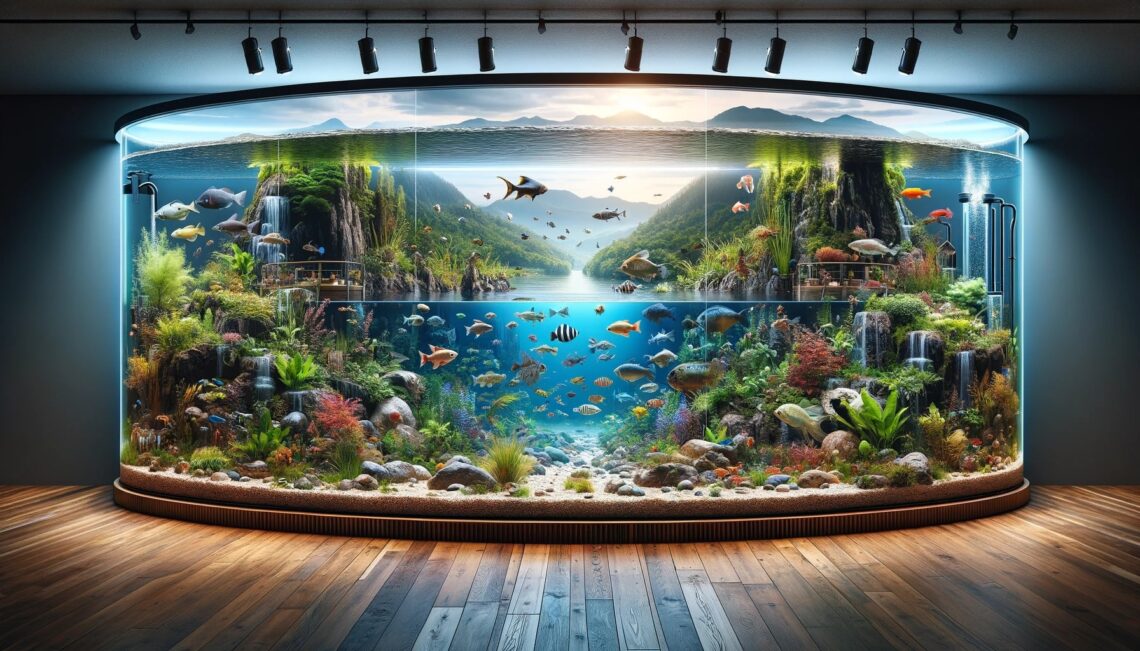Summary
Dive into the fascinating world of freshwater fish! This article explores the incredible diversity of freshwater fish species, their unique habitats, and essential tips for aquarium enthusiasts. Discover why these aquatic wonders are worth your attention and how they enrich our understanding of aquatic life.
Key Takeaways
- Freshwater fish exhibit remarkable adaptability to diverse environments.
- Understanding the specific needs of different fish categories is essential for proper care.
- Proper aquarium setup and maintenance are crucial for fish health.
- Water quality, feeding, and the inclusion of aquatic plants are key to a thriving aquarium.
- Conservation of freshwater species is vital for ecological balance.
What Makes Freshwater Fish Species Unique?
Freshwater fish are species that live in rivers, lakes, and streams, where the water has low salt content. In contrast, saltwater fish are found in oceans and seas, where the water has a higher salt concentration. The main differences between these two types of fish include their adaptability to different salt levels, habitat preferences, and physiological adaptations to their respective environments. Freshwater fish are often noted for their ability to cope with varying water temperatures and oxygen levels, while saltwater fish are adapted to living in a more consistent, saline-rich environment. Visit our fish profiles page to get more information about fish types.
Exploring the Categories: Coolwater, Warmwater, and Coldwater Species
Freshwater fish are classified into three main categories based on the water temperature they thrive in: coolwater, warmwater, and coldwater species. Each category has its unique characteristics and habitat requirements.
Coolwater Species
- Definition and Characteristics: Coolwater species are those that prefer water temperatures between 60°F and 70°F. These fish generally require a moderate amount of oxygen and are found in environments where water temperatures fluctuate seasonally.
- Examples and Habitat: A prime example of a coolwater fish is the Northern Pike. These species are often found in lakes and rivers where they can access both shallow and deep waters. Coolwater species are adaptable, living in areas with varied vegetation and substrate.
- Aquarium Care: In an aquarium setting, maintaining the right temperature is crucial for coolwater species. They need larger tanks to accommodate their size and swimming patterns. A well-filtered aquarium that mimics natural conditions is ideal.
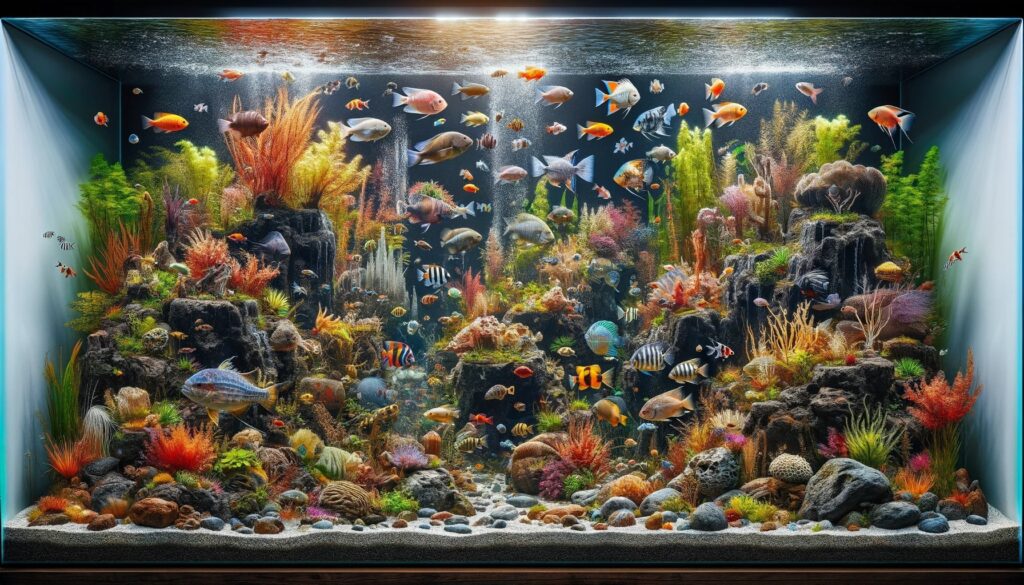
Warmwater Species
- Definition and Characteristics: Warmwater fish prefer temperatures above 70°F. These species are typically found in environments with warmer climates and have a higher tolerance for lower oxygen levels.
- Examples and Habitat: The Largemouth Bass is a popular warmwater species. They thrive in still or slow-moving waters like ponds, lakes, and sluggish rivers. Warmwater fish often inhabit areas with abundant aquatic vegetation which provides cover and feeding grounds.
- Aquarium Care: For warm water species, aquariums should have stable, warm temperatures. These fish often require less oxygen, so aeration needs are generally lower. However, they do benefit from spacious tanks that allow for natural behaviors like hunting and hiding.
You can visit my warm freshwater fish page for more information about them.
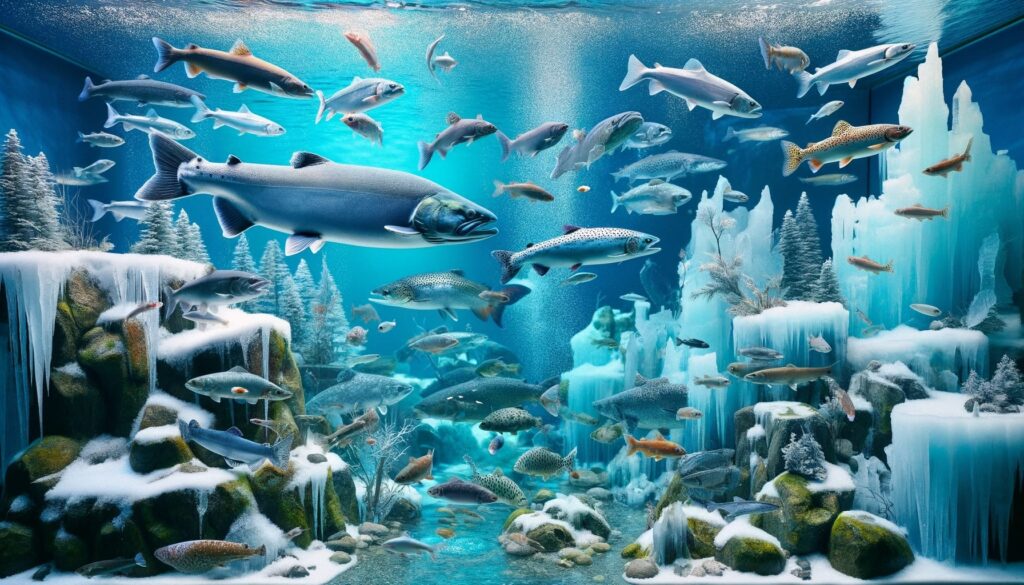
Coldwater Species
- Definition and Characteristics: Coldwater species are adapted to temperatures typically below 60°F. These fish have a high oxygen requirement and are found in cold, well-oxygenated waters.
- Examples and Habitat: Trout and Salmon are classic examples of coldwater fish. They are commonly found in cold streams, rivers, and lakes, often in mountainous or northern regions where water temperatures remain consistently low.
- Aquarium Care: Keeping coldwater species in an aquarium can be challenging due to their need for lower temperatures and high oxygen levels. Aquariums need efficient filtration and aeration systems to ensure sufficient oxygen supply. It’s also important to have a chiller to maintain the lower temperatures these fish require.
You can visit my cold freshwater fish page for more information about them.
Each of these categories contributes to the rich diversity of freshwater fish, offering enthusiasts a range of species to admire and care for. Understanding these differences is not only crucial for proper aquarium maintenance but also enhances our appreciation of the ecological roles these fish play in their natural habitats.
The Art of Keeping Freshwater Fish in Aquariums
Keeping freshwater fish in an aquarium is a fascinating hobby that blends artistic design with scientific principles. To create a thriving aquatic environment, understanding the essentials of aquarium setup is crucial. Here’s what you need to know:
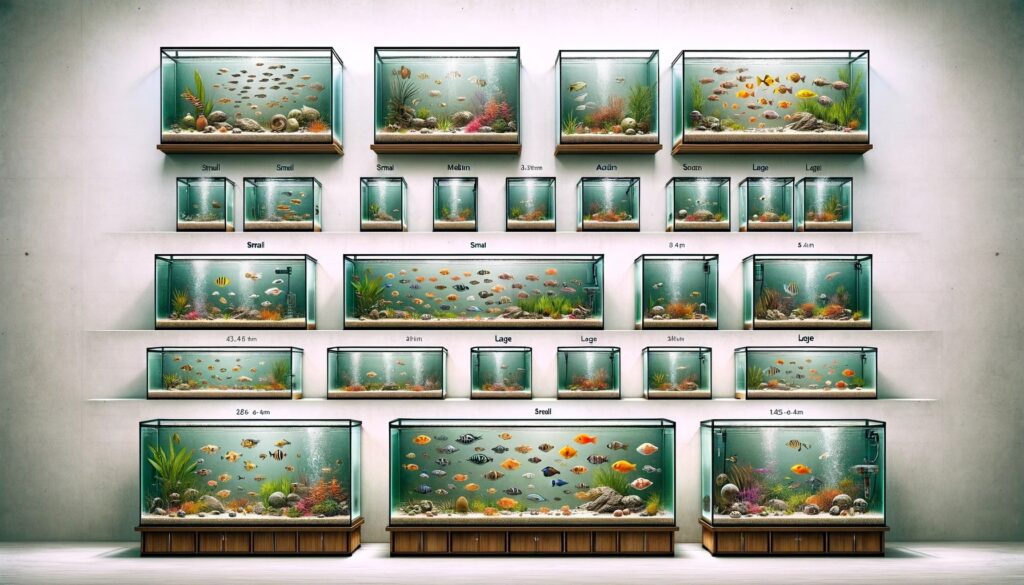
Choosing the Right Tank Size
- Importance of Size: The size of the tank is paramount. It needs to be large enough to accommodate the fish’s size and number, providing ample space for swimming and growth.
- Considerations: When selecting a tank size, consider the adult size of the fish, their swimming and territorial behavior, and the number of fish you plan to keep. A general rule is to provide at least 1 gallon of water per inch of fish, but more is always better, especially for larger or more active species.
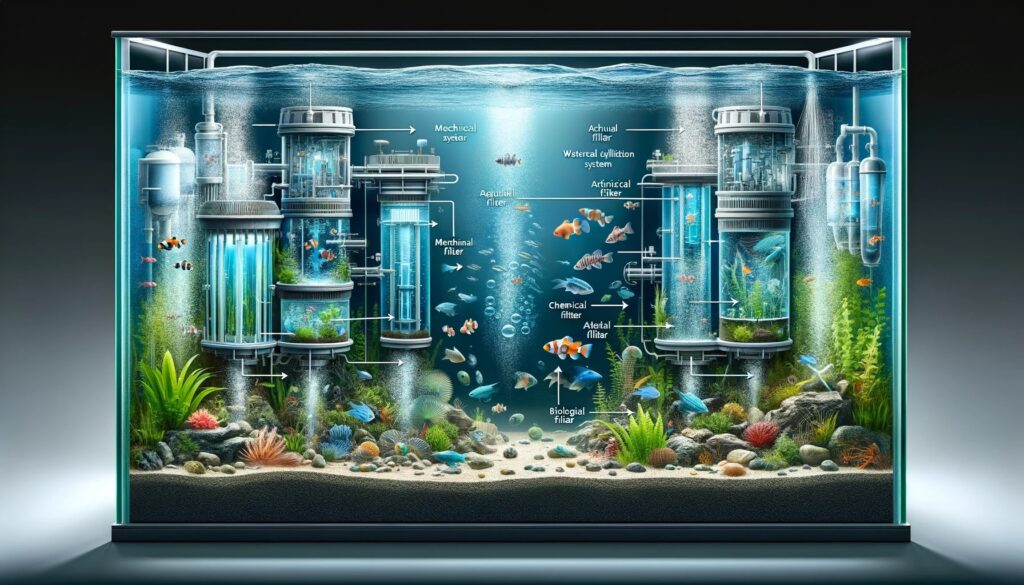
Water Filtration System
- Functionality: A good filtration system is essential to maintain water quality, remove waste, and keep the water clear and free of harmful chemicals.
- Types of Filters: There are three main types of filtration: mechanical (removes physical waste), chemical (removes impurities through activated carbon or similar media), and biological (uses beneficial bacteria to convert toxic ammonia and nitrites into less harmful nitrates). A combination of these is often used for optimal results.
Water Quality and Parameters
- Parameters to Monitor: Key water parameters include pH, hardness, ammonia, nitrite, and nitrate levels. Each fish species has specific requirements for these parameters. You need to check water quality regularly.
- Regular Maintenance: Regular water changes, typically 10-25% of the tank volume per week, are crucial to keep water parameters stable. Using a water conditioner to treat tap water is also important to remove chlorine and chloramines.
Selecting Compatible Fish Species
- Compatibility Factors: When selecting fish, consider their size, temperament, and environmental needs. Some fish are peaceful, while others are territorial. Some prefer the bottom of the tank, while others are mid-water or surface dwellers.
- Research: It’s important to research each species to understand its specific needs and compatibility with other fish. For example, mixing aggressive species with peaceful ones, or community fish with solitary species, can lead to stress and conflict.
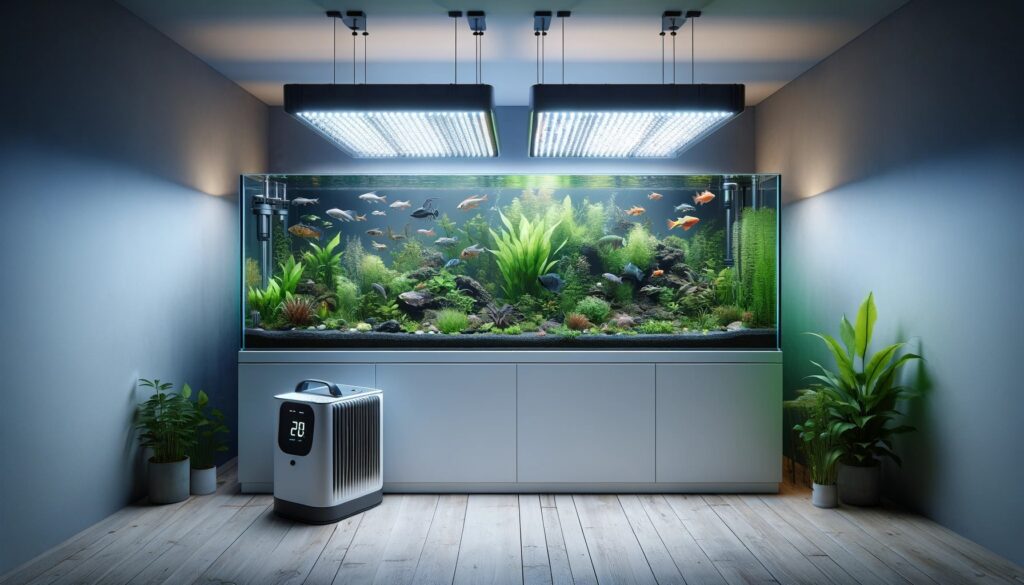
Aquarium Lighting and Heating
- Lighting Needs: Proper lighting is essential for plant growth and to mimic natural day-night cycles for fish. LED lights are a popular choice for their efficiency and longevity.
- Heating: Most tropical fish require a heater to maintain a stable temperature. The temperature needs to be consistent with the natural habitat of the fish species you are keeping.
Aquascaping and Decoration
Aquatic plants play a vital role in freshwater ecosystems. Discover how they provide shelter, and oxygen, and contribute to the overall health of the aquatic environment.
- Designing the Environment: Aquascaping is the art of arranging aquatic plants, rocks, driftwood, and substrates in an aesthetically pleasing manner. It also provides hiding places and territories for fish.
- Natural Habitat Mimicking: Aim to mimic the fish’s natural habitat as closely as possible. This includes the use of specific substrates, plants, and decorations that suit the fish’s natural environment.
Regular Monitoring and Care
- Ongoing Maintenance: Regular monitoring of water quality, filter performance, and fish health is essential. Feeding should be done in controlled amounts to avoid overfeeding and water quality issues.
In summary, keeping freshwater fish in aquariums is a rewarding experience that requires a blend of aesthetic design and scientific management. By understanding and catering to the specific needs of your aquatic pets, you can create a beautiful and healthy environment for them to thrive in.
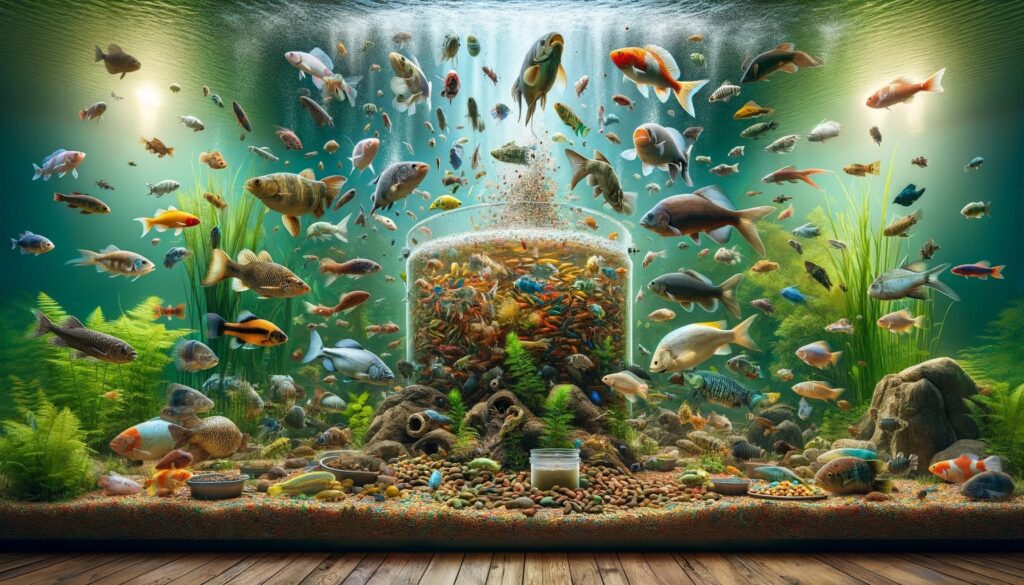
Feeding and Nutrition: What Do Freshwater Fish Eat?
Understanding the dietary needs of freshwater fish is crucial. This section covers the various types of fish food and feeding schedules to ensure proper nutrition.
- Varied Diets: Freshwater fish diets vary widely depending on the species. Some are carnivorous (eating live or frozen foods like worms and shrimp), others are herbivorous (eating algae and plant material), and many are omnivorous (requiring a mix of both).
- Types of Fish Food: Common types of food include flakes, pellets, freeze-dried options, live foods, and vegetables. Flakes and pellets are convenient and often fortified with nutrients. Live foods, like brine shrimp or bloodworms, are great for carnivorous fish, while blanched vegetables can be ideal for herbivores.
- Nutritional Balance: Ensuring a balanced diet is key. Fish need a mix of proteins, fats, carbohydrates, vitamins, and minerals. Commercial fish food is usually formulated to provide this balance, but supplementing with fresh food can offer additional nutrients.
- Feeding Schedules: Feeding schedules are extremely important. Overfeeding is a common mistake in fish care. Most fish do well with feeding once or twice a day, only as much as they can consume in a few minutes. Consistency in feeding time helps regulate their digestive system.
- Special Dietary Requirements: Some species have unique dietary needs. For example, bottom feeders might need sinking pellets, while surface feeders prefer floating foods. Researching specific species’ dietary requirements is important.
- Observation and Adjustment: Regularly observing fish during feeding can provide insights into their health and preferences. If they are not eating well or showing signs of nutritional deficiencies, adjustments to their diet or feeding schedule may be necessary.
Conservation Efforts for Freshwater Fish Species
Conservation is key to preserving freshwater fish species. Learn about ongoing efforts and how you can contribute to the conservation of these vital aquatic resources.
- Habitat Protection: Protecting and restoring natural habitats like rivers, lakes, and streams is crucial. This includes efforts to clean up pollution, manage water usage, and restore natural water flow and vegetation.
- Regulating Fishing Practices: Implementing and enforcing sustainable fishing practices helps prevent overfishing and maintain healthy fish populations. This includes setting fishing limits and creating protected areas where fishing is restricted.
- Research and Monitoring: Scientific research and regular monitoring of fish populations and water quality help identify conservation needs and track the success of conservation efforts.
- Public Awareness and Education: Raising awareness about the importance of freshwater fish and their ecosystems encourages responsible behavior and support for conservation measures.
- Community Involvement: Engaging local communities in conservation efforts, such as river clean-up projects and citizen science programs, helps to foster a connection with local ecosystems and promote stewardship.
- Supporting Conservation Organizations: Supporting organizations that focus on aquatic conservation through donations, volunteering, or advocacy helps to further their efforts in protecting freshwater fish species.
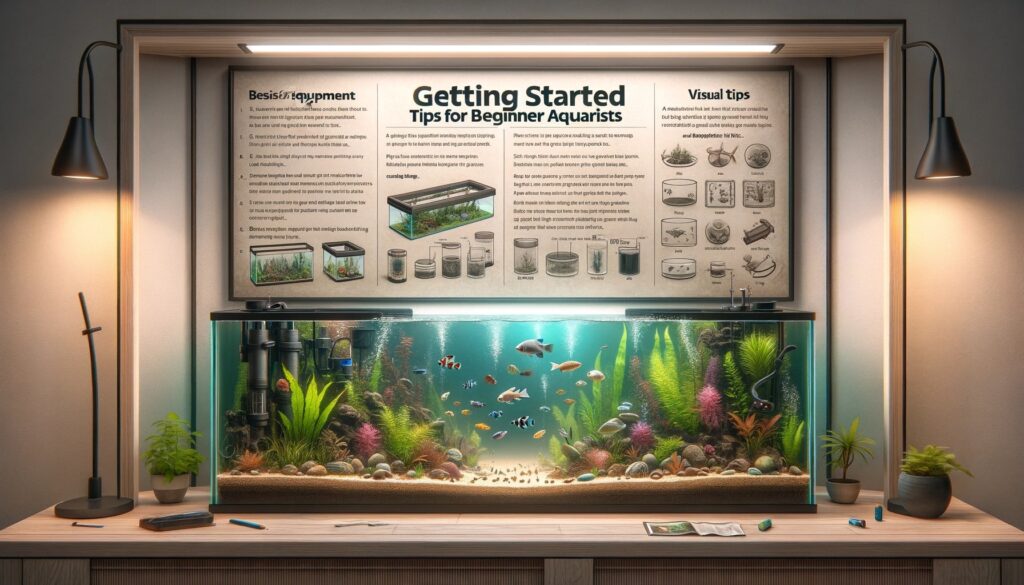
Getting Started: Tips for Beginner Aquarists
- Start with a Suitable Tank Size: Beginners should opt for a larger tank, as it provides more stable water conditions and is more forgiving of mistakes. A 20-gallon tank is a good starting point.
- Research Fish Species: Before purchasing any fish, research their specific needs, including tank size, diet, water parameters, and compatibility with other species.
- Understand the Nitrogen Cycle: Learn about the nitrogen cycle and how to cycle the tank before adding fish. This process establishes beneficial bacteria that convert harmful ammonia and nitrite into less harmful nitrate.
- Invest in Quality Equipment: Purchase a reliable filtration system, a heater (for tropical fish), and a water testing kit. Good equipment is crucial for maintaining a healthy environment.
- Regular Water Maintenance: Perform regular water changes, usually 10-25% of the tank volume per week, and monitor water parameters like pH, ammonia, nitrite, and nitrate levels.
- Feed Properly: Overfeeding is a common mistake. Feed small amounts once or twice a day, and only as much as the fish can consume in a few minutes.
- Avoid Overstocking: Overcrowding can lead to poor water quality and increased aggression among fish. Follow the guideline of one inch of fish per gallon of water, considering their adult size.
- Create a Natural Environment: Include plants, rocks, and substrates to mimic natural habitats and provide hiding spaces for fish.
- Be Patient and Observant: Allow time for the ecosystem to establish and closely observe the fish’s behavior and health, making adjustments as necessary.
- Seek Advice from Experts: Don’t hesitate to ask for help from experienced aquarists or staff at local fish stores. Joining online forums and communities can also be a great resource for support and advice.

